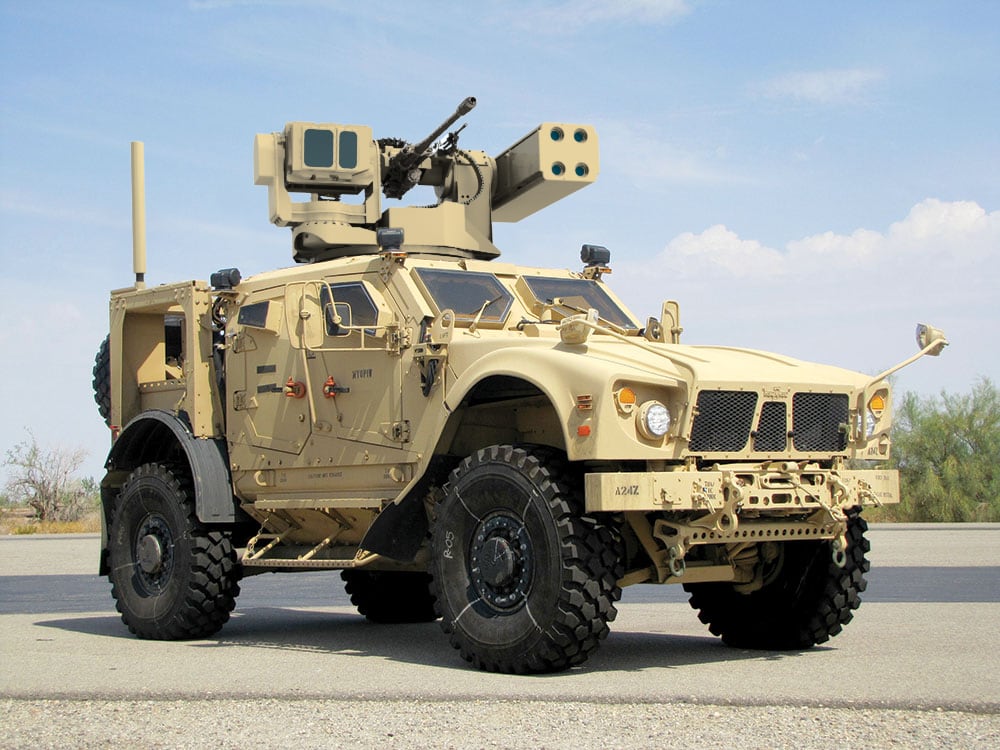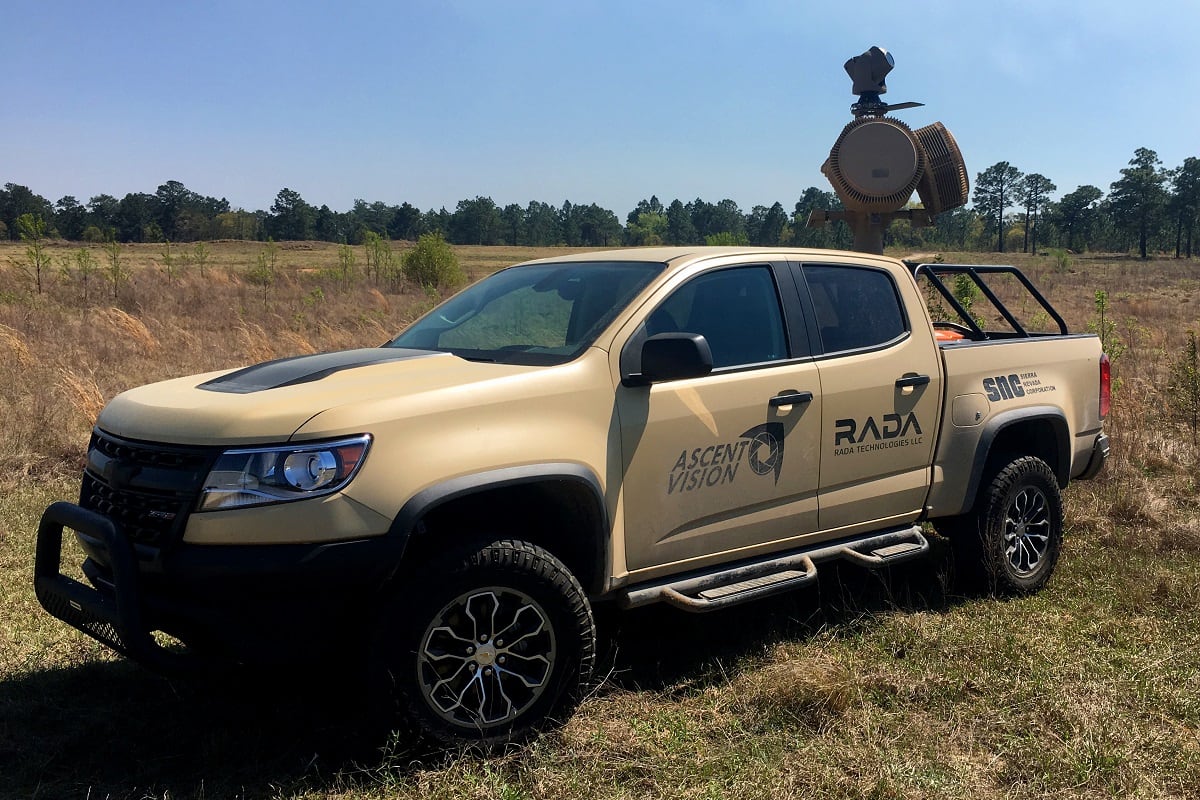LONDON — Raytheon is expecting a boom in international sales of its counter-UAS system already battle-tested with the U.S. Army.
The Howler system — which includes a Ku-band Radio Frequency Sensor, a command-and-control system, and a Coyote unmanned aircraft system designed to take out enemy drones — could soon see an abundance of buyers. The system could also include a high-energy laser defeat solution and a high-powered microwave capability to provide a non-kinetic approach to knocking drone threats out of commission, according to company officials.
“We have experienced quite a bit of interest from our international friends, partners and allies,” James McGovern, Raytheon vice president of mission systems and sensors in its Integrated Defense Systems business, told Defense News during an interview at DSEI, a defense exposition in London.
“It’s exploded: Counter-unmanned aircraft systems is the in-vogue discussion on weapon space and solution set at every trade show we’ve been to. It’s a nonstop revolving door of interested customers in our solutions,” he added.
Over the past five years, drone threats — cheap, commercial off-the-shelf ones — have proliferated in use, posing a threat on the battlefield as well as to airports, sports stadiums, government buildings and urban areas.
RELATED

Raytheon is preparing to reach initial operational capability with the U.S. Army of its Block II version of the Coyote, which is a variant that makes the Block more missile-like in appearance. The IOC goal is for the first quarter of 2020, according to Pete Mangelsdorf, director of the Coyote and rapid development programs within the land warfare systems portfolio at Raytheon.
In the meantime, the company is soon expecting congressional notification for a sale to its first foreign country, Mangelsdorf said. Raytheon expects to see roughly 15 more countries issue letters of request for the Howler system to include Block II Coyote rapidly following the first congressional notification, he added.
The company has license to separately sell sensors abroad, but generally customers are not just interested in what the sense-and-detect capability sensors would bring but rather want full-up systems that include all of Howler’s elements.
Raytheon’s Howler system is flexible and can integrate into other systems and platforms, according to McGovern. Currently, Howler is used on a U.S. Army truck, but it could be integrated onto a pallet at a fixed site or mounted on a different truck depending on customer needs, McGovern said.
The U.S. Army system was developed in response to a joint urgent operational need statement to find something that could counter drones as well as rockets, artillery and mortars, according to Mangelsdorf. The Block I version of the Coyote, which looks more like a plane or loitering munition than a missile, was the interim capability in response to the joint urgent operational need statement.
RELATED

The system is scalable in size. McGovern said Raytheon has used its gallium nitride technology to scale down the radar array while maintaining range and detection sensitivity, and while fitting it onto a smaller vehicle in the event a customer has a need for increased mobility, like in the case of special operations forces.
The radar has the ability to see singular drones and identify drone swarms with high fidelity. Other radars might just pick up a drone swarm as one big blob, McGovern noted.
Jen Judson is an award-winning journalist covering land warfare for Defense News. She has also worked for Politico and Inside Defense. She holds a Master of Science degree in journalism from Boston University and a Bachelor of Arts degree from Kenyon College.








